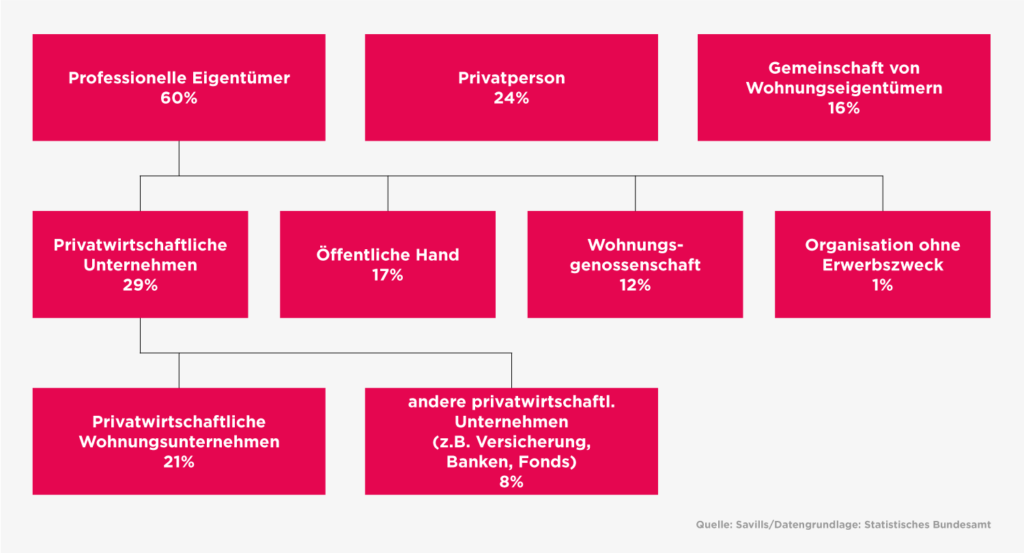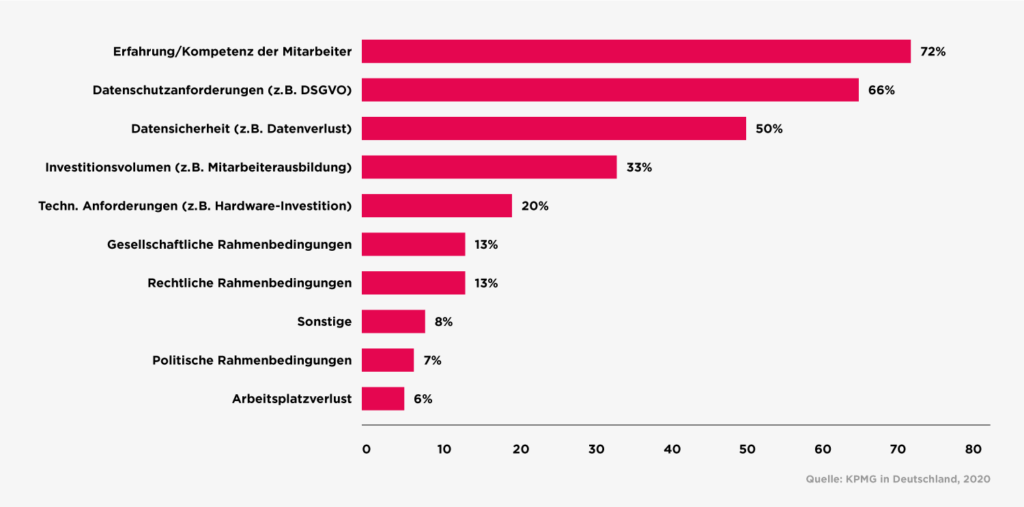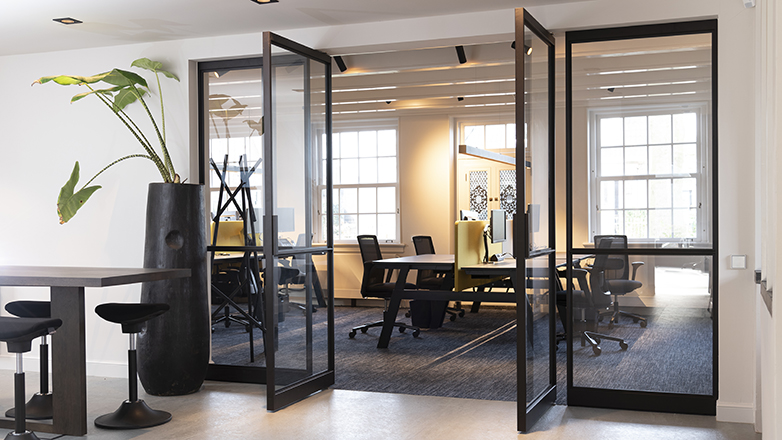Construction is going digital. But what about real estate management?
Operators of larger residential complexes in particular are increasingly recognizing the benefits of BIM, qualitative planning information or a digital twin of the finished project. This is because product data or technical information on installed building products, materials and construction elements enable optimal maintenance of the buildings.
Housing associations, public authorities and private owners are recognizing the benefits of BIM and digital twinning. But what impact is this already having on building operations and management? A brand-new study provides information about this.
Construction is going digital. This statement can now be made without immediately causing disparaging smirks from other, far more digitized industries. And it can be backed up with various examples: Digital planning methods such as BIM, prefabrication and system construction, computerized milling machines or GPS-controlled construction machinery are not dreams of the future. They are the standard in numerous construction projects.
However, the road to a fully digitally planned and realized building is still long, and analog construction technologies will continue to dominate everyday life on construction sites around the world for years to come. But what is the status of building operation? After all, there are terabytes of planning information and product data on the materials, building products and systems used – which could be put to good use in operation.
Owners recognize the benefits of digital planning methods
Owners or operators of the real estate (also called “assets” in investor German) are usually private or public housing cooperatives, the public sector, insurance companies, banks or real estate funds. In addition, there are private owners who have apartments or houses under self-management.
Ownership structure in the rental housing market, taking Berlin as an example: 60% of the housing stock is in the hands of professional owners, and a further 40% is owned by private individuals and homeowners’ associations. Source: Savills/Data basis: Federal Statistical Office.
Operators of larger residential complexes in particular are increasingly recognizing the benefits of digital planning data and a digital twin of the finished building. This is no coincidence: The digital twin (the virtual image of the completed project) enables optimal maintenance during subsequent building operation thanks to the planning and BIM information it contains on the building products and materials used. This additional benefit, which arises from component-based BIM planning, distinguishes it fundamentally from classic 2D or 3D planning: Here, the planning and product data are available as simple lines or surfaces and without linked additional information such as dimension, component structure or technical properties – unlike with BIM. The model-based product information and relevant BIM planning data can be accessed directly on Plan.One or in the planning solutions Revit and Archicad via Plugin into one’s own planning. The benefits for architects, specialist planners and subsequently the operators are obvious: Fast and reliable access to building products and the supplementary data useful in building operation.
Nevertheless, owners and operators are rather reluctant to convert their systems so that they can benefit from digitization and the extensive options in the near future. This is one of the conclusions of a study conducted by the auditing firm KPMG in the summer of 2020, in which 156 companies participated. Various key facts were derived from the survey, which above all make it clear that a) large companies are already more digitized, b) digital strategies are considered important but are often not yet in place, and c) there is a lack of understanding of digital transformation among employees and companies are therefore increasingly training their staff.
Training and knowledge building is essential
Most of the respondents also see the greatest challenge in the necessary training and knowledge building of employees. Almost three-quarters of companies see a lack of experience or expertise with digital tools and applications as the greatest potential risk in digitization – followed directly by growing data protection requirements (66%) and concerns about data loss (50%).
The risks of digitization in the real estate sector should not be underestimated, according to participants in a recent KPMG study from 2020. Nearly three-quarters of companies see a lack of experience or skills among their employees with digital tools and applications as the greatest potential risk in digitization, followed by growing data protection requirements (66%) and concerns about data loss (50%). Source: KPMG in Germany, 2020.
For the management of real estate, every professional operator relies on an enterprise resource planning system (ERP system) for its resource planning. The ERP system is used to control all business processes in the company. It manages operational resources such as human resources, production resources and capital. Depending on how intelligent the interfaces to other systems are, digital data from planning can also be incorporated here. However, acquiring such a system and implementing it in the company’s own processes is neither easy nor cheap. Real estate operators therefore consider very carefully when and to which program they switch for their building management.
Proptechs hardly play a role so far
So-called. Proptechs, small startups, usually quite young, that take on sub-processes in real estate operations and digitize them, curiously play a minor role. At least, that is the picture conveyed by the KPMG survey. Nevertheless, they generate attention and are often the source of ideas for the implementation of functions in the company’s own systems.
Customer or tenant portals are now far more important, where apartment tenants can, for example, call up documents such as the utility bill or adjust master data such as bank details or tenant data online. Many cooperatives and housing associations already offer such services, and the trend is rising sharply.
BIM is becoming increasingly important
Digital planning and the advantages associated with BIM have so far been used by very few real estate operators and housing cooperatives. This is all the more surprising as the use of BIM is of high importance for almost all of them. The KPMG study also comes to this conclusion: over 70% of the companies surveyed recognize BIM as a tool for the targeted optimization of their business.
Conclusion
The housing cooperatives are approaching the coming years with vigilance and are currently considering very carefully how they can sustainably implement digitization in their sector and where they can participate with their business models. Partners like Plan.One can support operators here via their platform users, the architects and specialist planners. After all, thanks to intelligent product and planning data with comprehensive additional information – equally useful for the subsequent utilization phase – building operation will become more efficient and cost-effective in the future. The picture that is emerging right now in the industry: People are cautiously curious. There will be no digitization at any price in the residential construction sector. And that is certainly a good thing, because behind the housing companies are many tenants who rightly rely on well thought-out digital strategies and cautious action on the part of their landlord.

Tim Westphal
Author and industry expert, specialising in architectural journalism on topics requiring explanation and complex building stories.





